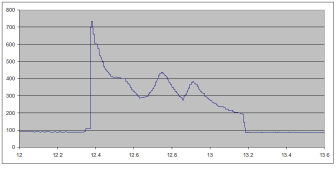100:5 divides by 20, so shorting the 100 turn winding, 30A reading --> 600A in 5 turn primary. Should work.
Resistor alternately, I guess 10 milliohm would give 300 mV?
Just don't electrocute yourself with the current transformer. You've got a 20:1 voltage boost, but not knowing transformer characteristics I don't know what voltage will develop across it before core saturates. I think I prefer the shorted winding approach.
I used a current transformer meant for line measurement. It had a resistor, outputs 300 mV for 100A.
I plan on putting 600w of solar panels on the roof of a small camper. The Panels will be able to tilt so I can get as much power as I can. My main use is to run a 5000 BTU AC tha draws 450w in the summer and a 500w space heater in the winter & a few little items like phones, tablets and led...

diysolarforum.com
Also for ripple current in battery cable, and AC consumption of various loads.
After reading of someone tripping battery breakers at well below rating, I realized that could be due to pulses of current drawn by the inverter. Ideally capacitors would smooth out current draw so high frequency switching pulses and 60 Hz draw all came from the caps, and current from batteries...

diysolarforum.com
I've now got the HF clamp AC/DC ammeter. $100, 1000A max, 10 mA resolution.
It has inrush feature.
Two probes, and subtract with math for differential?





